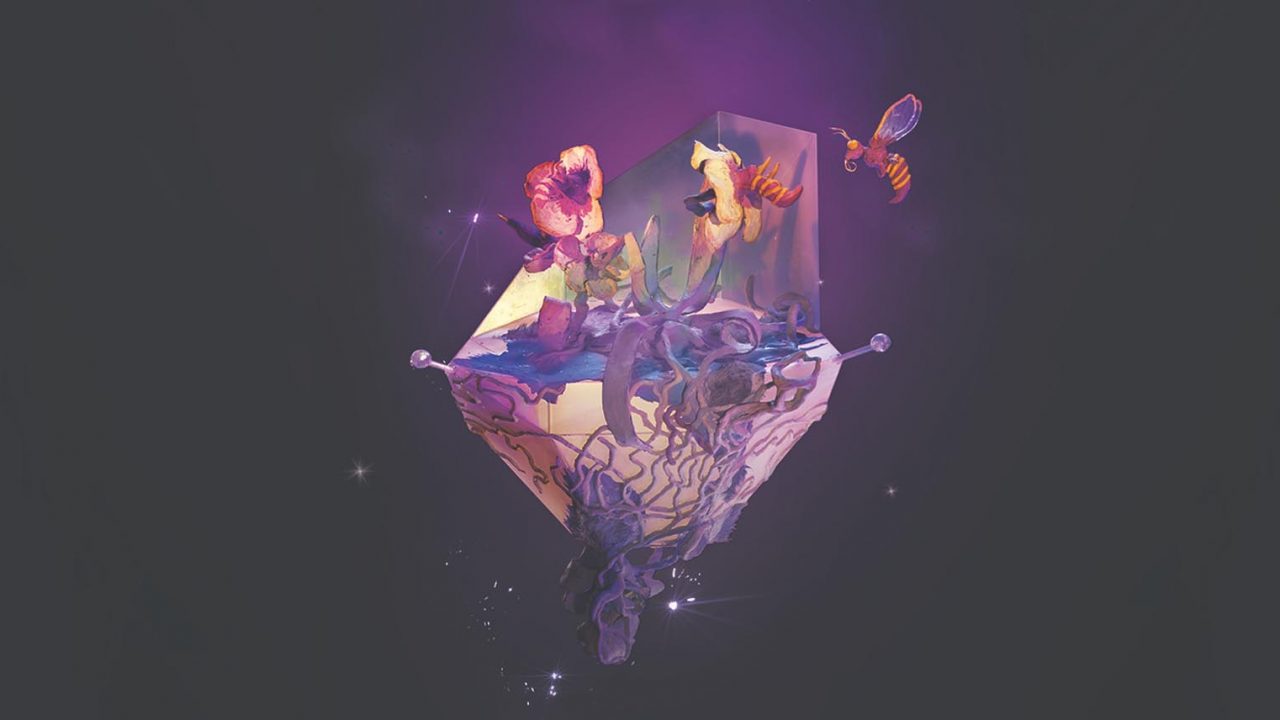
The Orchid and the Bee: At the Crossroads of Art and Science
The Orchid and the Bee: At the Crossroads of Art and Science
Ages: 12+
School Subjects: Science – Biology, Science – Life Systems and Ecology, Arts Education – Visual Arts, Philosophy, Technology Education – Communications and Technology/Environment and Technology
Themes/Topics: Interdependence of Animals and Plants, Human Use of Natural Resources, Habitat Destruction, Darwinism, Ecosystem Recovery, Virtual Reality, Stop-Motion Animation
As a science educator and communicator, I am always searching for material that will engage my students. When Frances Adair Mckenzie’s The Orchid and the Bee was shared with me, I was intrigued! Frances used art to communicate and explore concepts related to the study of the natural world. This virtual reality stop-motion animation uses symbolism and imagery to depict the delicate balance within nature and our interaction with living things, and it should generate some thoughtful classroom discussions. How do plants and animals depend on each other for survival? What can we learn from the relationship between the orchid and the bee?
I had the opportunity to interview Frances. She was gracious with her time and answered all my questions, on topics ranging from ecosystem health to resource mismanagement and the importance of appreciating what the natural world has to offer. Through her use of imagery, colour and sound, Frances highlighted issues we can no longer ignore. It is my hope that my interview with Frances will inspire you to have similar conversations with your students.
The quality of this video is somewhat reduced, as we had to record the interview during lockdown using a video-conference app.
Discover and learn how art is used to depict relationships between living things
After your students view The Orchid and the Bee, you can start a discussion on the significance of each scene and how art can be used to deliver a message. Guiding questions can include:
- What role does music play in setting tone and mood?
- What colours are used to express a shift in mood? Do colours affect your interpretation of The Orchid and the Bee?
- What sculpting techniques does the artist use to show the progression of our relationship with nature and the resources we consume?
- Identify the elements of design used in Frances’s artwork. How were they effective?
- How is Frances able to communicate her ideas without any narration or voiceover?
Student Activities
Research and do a presentation on an artist who has created an art piece or film based on a scientific concept or idea. What visual language did they use to communicate the idea? How can visual formats help someone to better understand science?
Create an art piece based on a scientific concept or idea. What science concept are you learning about that would be easier to understand if you were able to visualize it? What visual medium will you use? How will you communicate the idea without telling your audience what they’re seeing, using images only?
Is The Orchid and the Bee relevant in the post-COVID world?
Created pre-COVID-19, The Orchid and the Bee speaks to the importance of thinking about the things that matter to us, and the VR experience seems highly relevant now that the virus has caused people across the globe to pause and reflect on what we’re doing, both as individuals and as a society. The pandemic has made me see the importance of spending quality time with family, returning to nature, and appreciating the things I overlooked. I am literally and figuratively stopping to smell the roses again. In the post-COVID world, Charles Darwin’s comment that “not being able lately to work, I have amused myself about orchids” also seems apt in many ways.
Ask your students to think about the above, and see what they have to say. When we stop and smell the roses with our students, meaningful conversation can occur.
Experience The Orchid and the Bee VR
Florence Ho is a science educator and communicator from the Niagara Region in Ontario. By combining elements of storytelling, maker philosophy, and her experiences with STEM education, Florence fosters an environment for students to become creative problem solvers and critical thinkers. Her past work includes being a contributing writer for Delta, a science resource created for Partners in Research, and a science presenter on issues pertaining to STEM education at the yearly STAO conference in Toronto.
Frances Adair Mckenzie is an interdisciplinary artist who has exhibited in Canada and Europe. Her work negotiates speculative investigations into concepts of materiality, staging and form, always in deference to process as the hands-on manipulation of real materials and objects, most often through the interface of digital technology and sculpture. Frances’s augmented reality book, Glossed Over & Tucked Up, was published in 2016 by Montreal’s Anteism Press. Her association with the Nation Film Board of Canada began with the 10th edition of Hothouse, when she created the surrealist animated short A Little Craving. Her most recent NFB project, The Orchid and the Bee, is a VR stop-motion animation that speaks to the interconnectedness of all living things. Frances lives and works in Montreal.
Pour lire cet article en français, cliquez ici.
Discover more Educational blog posts | Watch educational films on NFB Education | Subscribe to the NFB Education Newsletter | Follow NFB Education on Facebook | Follow NFB Education on Twitter | Follow NFB Education on Pinterest

